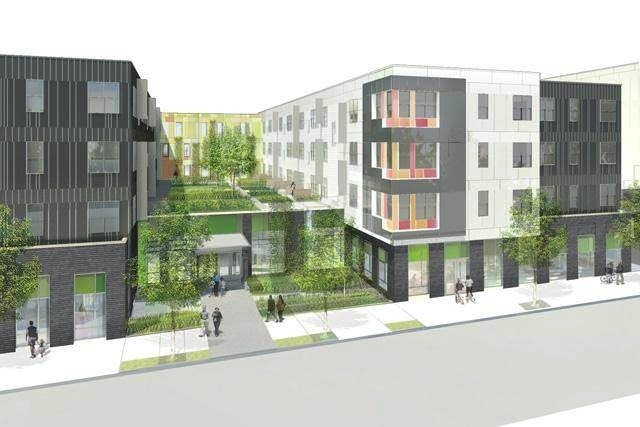Green affordable housing design focuses on creating sustainable, energy-efficient, and environmentally friendly housing that is affordable for low-income individuals and families. Here are some key considerations and design principles for green affordable housing:
- Energy Efficiency: Design the housing units with a focus on energy efficiency to reduce energy consumption and lower utility bills for residents. Incorporate features such as proper insulation, energy-efficient windows, LED lighting, and high-efficiency appliances.
- Renewable Energy: Integrate renewable energy sources into the design, such as solar panels or wind turbines, to generate clean energy and reduce reliance on traditional energy grids. This can help lower energy costs for residents and decrease the environmental impact.
- Passive Design Strategies: Utilize passive design strategies to optimize natural heating, cooling, and ventilation. Orient buildings to maximize natural light and take advantage of shading elements to minimize heat gain in hot climates. Incorporate natural ventilation systems and design for cross-ventilation to reduce the need for mechanical cooling.
- Water Efficiency: Implement water-efficient systems and fixtures to reduce water consumption. Install low-flow faucets, showerheads, and toilets, as well as rainwater harvesting systems for irrigation purposes. Consider using native, drought-resistant plants for landscaping.
- Sustainable Materials: Choose sustainable and locally sourced building materials to reduce the environmental impact of construction. Opt for materials with low embodied energy and high recycled content. Explore options like bamboo, reclaimed wood, recycled steel, and low-VOC (volatile organic compounds) paints and finishes.
- Indoor Air Quality: Prioritize indoor air quality by designing for proper ventilation and using non-toxic materials. Ensure adequate airflow and filtration systems to minimize indoor pollutants and allergens. This can improve residents’ health and well-being.
- Water Management: Implement strategies for effective stormwater management on-site. Consider features like permeable pavement, green roofs, and rain gardens to reduce stormwater runoff and promote natural water filtration.
- Community Spaces and Connectivity: Design common areas and outdoor spaces that encourage community interaction and social connectivity. This can include shared gardens, play areas, community rooms, and outdoor seating. Creating a sense of community fosters well-being and a shared responsibility for the environment.
- Access to Public Transportation: Locate affordable housing developments near public transportation options to reduce the reliance on private vehicles. This promotes sustainable transportation and reduces carbon emissions.
- Green Certifications and Standards: Aim for green certifications and standards, such as GGBC (Global Green Building Council) or Energy Star, to ensure compliance with recognized sustainability criteria. Certification can enhance the marketability of the housing and provide independent verification of its green features.
- Education and Engagement: Educate residents about sustainable living practices and provide resources for energy conservation, waste reduction, and environmental stewardship. Encourage participation in recycling programs, composting, and community initiatives to create a culture of sustainability.
- Life Cycle Analysis: Consider the life cycle impacts of materials, systems, and design choices. Assess the long-term environmental and economic costs and benefits of various options to make informed decisions that promote sustainability throughout the life of the housing.
By incorporating these principles into the design process, green affordable housing can provide comfortable and healthy living spaces for low-income individuals and families while minimizing environmental impact and reducing operating costs.



